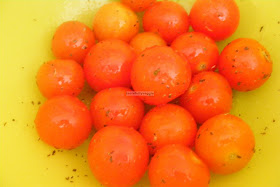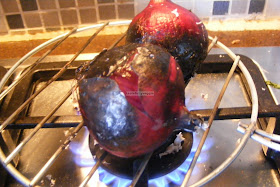Mung Poha Vada (Low Fat Mung Beaten Rice Dumpling)
My husband loves paruppu vada and fancies it very often. He would describe how crispy it should be, how there must be some finely chopped onions in it and how great it would be to eat. I will keep listening quietly and do not say I will make it anytime soon. While I know avoiding deep fried food is good for health I do feel bad about not making him something he enjoys so much. I then came across a mung poha vada recipe on a television show and adapted it to our taste and calorie preference. It is originally a deep fried recipe but I made it using my kuzhi paniyaram koodu. I also recently learned that a form of this utensil is used in western cuisine as well and is called Danish cake pan. I have always found it so easy to make several low fat dishes. Back to the vada, it turned out to be really yummy. I made it as a starter really and was not quite sure if I had made too much of it. It was so good that we finished it off quite easily. The rest of the meal was not particularly rich in protein while they had other goodies and hence it was a great contributor to our nutrition. It is a must try for all ages. Here is how I made it...
2/3 cup mung dal (dehusked split mung bean)
1/3 cup poha
2 green chillies
3-4 tablespoons finely chopped coriander leaves
Salt to taste
1 small red onion, finely chopped
Rinse and soak the mung dal for 1-2 hours. If using thin poha, it is adequate to soak it for ten minutes just before grinding, if using thick variety, soak for 1 hour.
Drain water and grind the dal, poha and chillies together to a coarse paste and finally add salt. Add only enough water to run the blades and final consistency should be such that you can just spoon the batter. Add onions and coriander
Heat the ‘kuzhi paniyaram koodu’ with less than a teaspoon oil in each of the pits. Add a spoonful of batter and cook until the bottom side browns and top side sets and then turn and cook until both sides are browned
Serve with or without chutney!
This vada did not even need all the oil I had put and that means it needed less than a teaspoon of oil!






















































